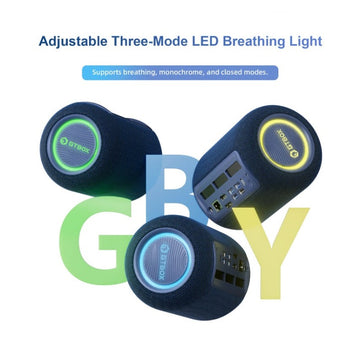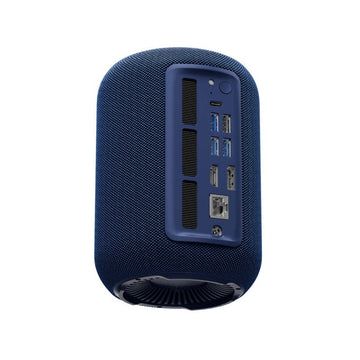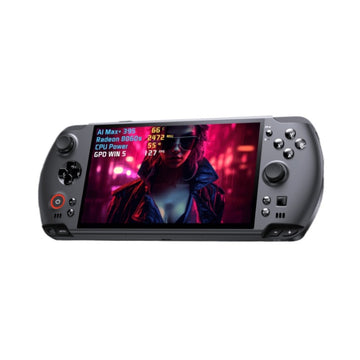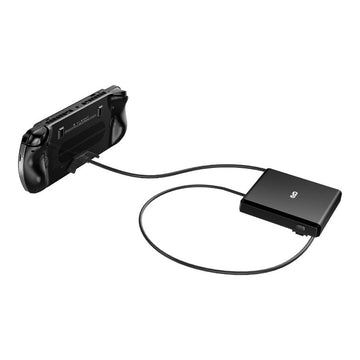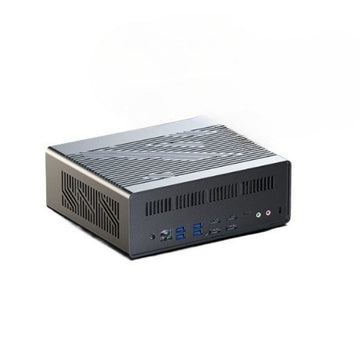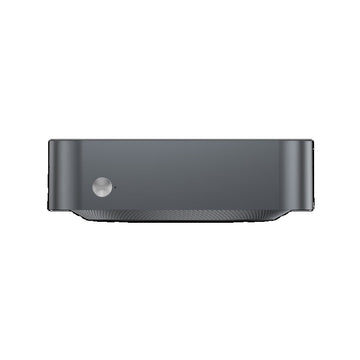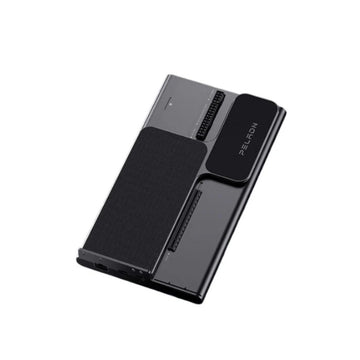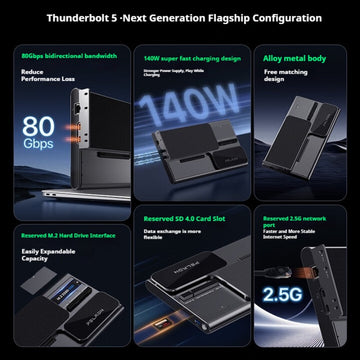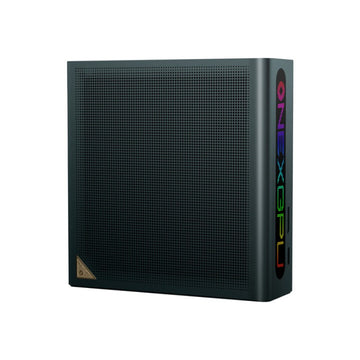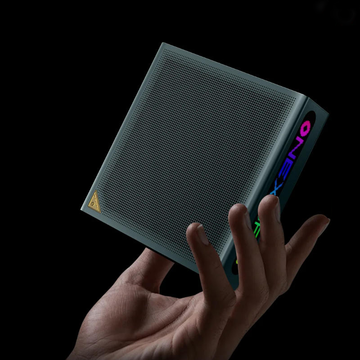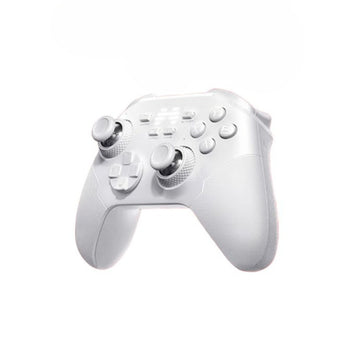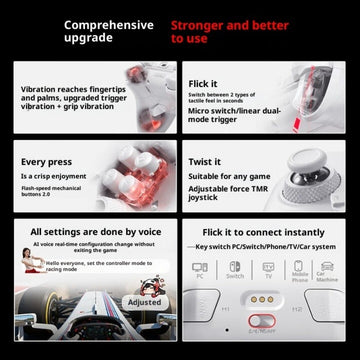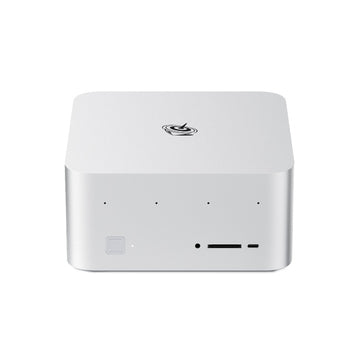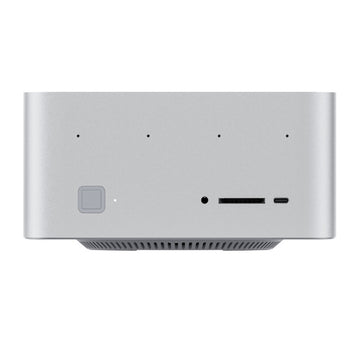PELADN Silver Wing HA-4 Mini PC Hands-on Review
Thanks to the fierce competition between Intel and AMD, the performance of mobile products is getting stronger and stronger. A notable testament to this progress is the AMD R7-7840, unleashed this year, showcasing the formidable combination of Zen4 + RNDA3 architecture. This cutting-edge integration not only amplifies CPU capabilities but also empowers the GPU, making it a highly sought-after component for mini console enthusiasts. Particularly advantageous for the constrained spaces of mini consoles under 1L, the R7-7840's harmonious synergy between CPU and GPU performance renders it an ideal choice for constructing compact gaming powerhouses—a true small steel cannon.
Today, we delve into the realm of miniature computing with a spotlight on the PELADN HA-4 Silver Wing Mini PC. Boasting the popular AMD Ryzen R7-7840HS processor, this device stands out among Mini PC aficionados. Encased in a meticulously crafted CNC + anodized metal body and adorned with the mesmerizing Joyous Ring RGB lighting effect, the HA-4 Silver Wing not only excels in performance but also emanates a distinctive aesthetic appeal. In a market saturated with options, this Mini PC stands as a unique and stylish contender, offering a highly consistent appearance style that sets it apart in the competitive landscape of Mini PCs.
Unboxing

The packaging of the HA-4 is characterized by a sleek combination of black and orange colors. As part of PELADN's H-series Mini PC lineup, the HA-4 offers various configurations to cater to diverse user needs. These configurations include barebones, as well as options with 16GB RAM and either 512GB or 1TB storage, and a higher-end variant with 32GB RAM and 1TB storage. The versatile range of configurations makes the HA-4 adaptable to different usage scenarios, providing users with options that suit their specific requirements within the compact and stylish design of the H-series Mini PC.

When you open the box, you can see the main body of the Mini PC. The prominent feature of the Mini PC is its main body, characterized by an anodized metal construction that exudes a substantial and tactile quality. The silver aluminum composition not only imparts a sleek appearance but also offers a robust texture, making it particularly appealing to gamers who appreciate the aesthetic and feel of solid, metallic components. The Mini PC's design, with its attention to detail and emphasis on the tactile experience, enhances its allure for those with a penchant for high-quality hardware.

The accessories section complements the Mini PC with essential components, offering a VESA mount for versatile mounting options, a power supply for seamless and reliable operation, and an HDMI cable to facilitate easy connectivity, ensuring a comprehensive and user-friendly experience.

The power supply component is sourced from Huntkey, a reputable and well-established manufacturer, delivering a reliable output of 19 volts and 6.32 amperes, totaling 120 watts.
Design and Apperance



Back to the Mini PC, The PELADN HA-4 body undergoes a meticulous manufacturing process, including cutting, polishing, stamping, punching, blind-hole punching, sandblasting, anodizing, and embellishment with alloy plates. Utilizing advanced CNC technology, the edges are precisely brightened. The fuselage features a sophisticated combination of a metal shell and inner metal bracket, resulting in a compact three-dimensional design measuring 136 x 128 x 52mm, occupying a volume of around 0.9L. This meticulous craftsmanship and thoughtful design contribute to the overall aesthetic and functionality of the PELADN HA-4, showcasing a blend of precision and innovation.

The top fan outlet of the machine utilizes stamping technology, featuring PELADN's logo on the lower right side of the cover. While the metal openings contribute to an aesthetically pleasing design and theoretically enhance heat dissipation performance, their lack of symmetry and centering might pose an issue for individuals with obsessive-compulsive disorder. A suggestion is made for the openings to be repositioned to the center of the fuselage for a more visually appealing and balanced configuration.

Located on the front of the fuselage, noteworthy features include a 3.5mm headphone jack, two USB 3.2 Type-A ports, one USB Type-C port, a reset hole, and a power button. The power button, deserving commendation, shares the same sleek metal color as the overall design, contributing to both aesthetic cohesion and user-friendly functionality.


The PELADN HA-4 features strategically positioned air inlets and outlets on its side, with one side designated for air intake from the front of the mainboard and the other serving as an outlet for air expelled from the back of the mainboard. Enhancing heat dissipation efficiency in confined spaces, the HA-4 employs upper and lower double air ducts to facilitate improved cooling and ventilation, ensuring optimal thermal performance for the system.

The rear panel of the device features a DC power interface, two USB Type-A ports (one supporting USB 3.2 and the other USB 2.0), a 2.5G wired network port, two HDMI ports, and a light effect switching/switch button. This configuration provides a versatile connectivity hub, allowing users to power the device, connect various peripherals through USB, establish high-speed wired network connections, and interface with external displays via HDMI. The inclusion of a dedicated light effect switching/switch button adds an additional layer of convenience for controlling visual aesthetics or other lighting features.
Disassembly

When it comes to high-performance mini PCs, users prioritize both workmanship and performance. In evaluating the PELADN HA-4, a closer examination of its internal components becomes imperative. Disassembling the machine unveils the intricacies of its workmanship, shedding light on the meticulous design and construction. Users keen on optimal performance eagerly anticipate the revelation of the internal components, anticipating the device's capability to deliver efficient and powerful performance. The PELADN HA-4, in this context, invites scrutiny to assess its craftsmanship and unleash the potential that lies within for users seeking a high-performance mini PC.

To access the internal components of the Mini PC, begin by unscrewing the four screws located at the bottom and carefully removing the bottom cover. Once opened, the internal layout reveals a substantial heat sink and fan configuration, actively cooling the power supply area for both the SSD and motherboard situated on the left side below. On the right side, two DDR5 memory sticks are neatly stacked. Notably, a protective film has been applied to the central chip, a precautionary measure taken by the manufacturer to prevent inadvertent short circuits during the assembly or maintenance process.

To access the M.2 SSD, follow the step-by-step instructions in the official installation video. Begin by delicately detaching the internal protective frame as demonstrated. Next, disengage the heat sink and fan from the hard drive location to reveal the M.2 SSD. This sequential process ensures a careful and proper removal of components, facilitating easy access to the desired M.2 SSD.

In the hardware configuration, both the SSD and CPU components are equipped with silicone heat sinks, a significant measure aimed at regulating the temperature of the SSD and ensuring stability in the power supply for the CPU. The efficacy of the heat dissipation system will be elaborated upon in the subsequent section dedicated to the testing of the roasting machine.

The front cover of the device can be easily detached by unscrewing the hexagonal screws situated at each of the four corners, thanks to its frame structure. Upon removal, it becomes evident that the cover maintains a substantial thickness, and the anodizing process imparts a commendable surface texture and tactile quality, enhancing the overall aesthetic and feel of the product.

After removing the cover, the internal motherboard becomes visible, and the disassembly of the cover is undertaken to streamline subsequent dismantling processes. However, if the sole purpose is to replace the RAM and SSD, there is no necessity to remove the cover, simplifying the maintenance procedure for those specific components without the need for complete disassembly.

The SSD component incorporates PELADN's proprietary brand SSD, leveraging PELADN's distinctive advantage as a board manufacturer with an extensive product portfolio. The company's notable strength lies in its diverse product line, and there is anticipation for PELADN to unveil compact hosts featuring independent graphics in the future. This strategic move positions PELADN to continue its innovation and expansion within the market, building on its established foundation as a leading board manufacturer.

Users may find themselves questioning the placement of the WiFi antenna on an all-metal body. The solution lies in the design of the back cover, which features a combination of acrylic and metal in the same color. In this innovative approach, the WiFi and Bluetooth antennas are securely fixed to the back of the device, ensuring optimal connectivity without compromising the sleek, all-metal aesthetic.

The network card component of the system incorporates Intel's AX200, enabling support for Wi-Fi 6 with a 2x2 configuration, 160M bandwidth, and integrated Bluetooth 5.2 functionality. The wireless aspect boasts a maximum data transfer rate of 2.4Gbps, reflecting the card's advanced capabilities in providing high-speed and efficient connectivity for the overall system.

To access the radiator, start by removing the four screws securing the motherboard, then carefully flip it over. Upon inspection, you'll find a large-size centrifugal fan in place, with an additional enhancement in the form of a circle of foam surrounding the fan. This modification aims to optimize the fit between the fan and the upper cover, ensuring efficient cooling performance for the system.

A generously sized pure copper heat sink is strategically positioned at the air inlet, serving as an effective thermal management solution. This large heat sink, composed entirely of pure copper, is designed to efficiently dissipate heat generated within the system, ensuring optimal cooling performance. By strategically placing it at the air inlet, the heat sink maximizes its effectiveness in absorbing and transferring heat away from critical components, thereby enhancing overall thermal efficiency and contributing to the sustained functionality and longevity of the system.

Taking off the cooling fan, one can observe the utilization of a substantial metal structure coupled with a heat sink positioned adjacent to the CPU in the R7-7840HS. The design incorporates three heat pipes situated at the center to efficiently dissipate heat, enhancing the thermal management system of the device. This configuration underscores a meticulous approach to thermal regulation, indicating a thoughtful engineering strategy aimed at optimizing the performance and longevity of the R7-7840HS processor.

The fan specified for the system operates at 5V with a current of 0.4A. Its larger size and 2W power rating are expected to contribute to effective heat dissipation, especially when combined with the three heat pipe configuration. This setup is designed to enhance the cooling performance of the system, ensuring efficient thermal management and optimal operating conditions.

The dual HDMI interfaces feature integrated timing reshaping chips and TVS (Transient Voltage Suppressor) tubes, enhancing their functionality and reliability. These components play a crucial role in optimizing signal timing, ensuring smooth and accurate data transmission between devices connected through HDMI. The inclusion of TVS tubes further protects the interfaces from voltage spikes, enhancing overall durability and safeguarding connected devices from potential electrical damage. This advanced technology contributes to a more robust and stable HDMI connectivity experience, making it suitable for various applications where precise and secure data transmission is essential.
In the thriving market of mini PCs dominated by lesser-known brands, the majority resort to the public version OEM model, resulting in compromised quality with subpar materials and designs. However, PELADN's HA-4 distinguishes itself by prioritizing solid craftsmanship and materials. The motherboard components' layout and SMT welding process are meticulously regular, while conductive tape short circuits enhance anti-static capabilities next to interfaces. The HDMI output section incorporates a timing reshaping chip (IT66318FN, HDMI2.0 Retimer by Lianyang Semiconductor) for improved signal quality. Additionally, TVS (Transient Voltage Suppression Diode) is strategically placed on the interface to prevent Electrostatic Discharge (ESD), underlining PELADN's commitment to delivering a high-quality mini PC.
To cut expenses, numerous white label or no-brand products opt to eliminate the timing rescheduling chip and TVS. While users may not encounter immediate issues upon initial usage, prolonged use, particularly in winter, may lead to complications due to insufficient anti-static capabilities. Over time, these products are prone to interface failures and damage, highlighting the trade-off between cost reduction and long-term reliability in consumer electronics.
Performance
Benchmarks Testing

The PELADN HA-4 Silver Wing is powered by an AMD R7 7840HS processor, delivering impressive performance. The 32GB+1TB variant is equipped with 2x16GB DDR5 5600 memory, ensuring efficient multitasking and smooth operations. Additionally, the storage solution is handled by PELADN's proprietary PCIe 4.0 SSD, reflecting the brand's commitment to delivering high-speed data access and storage capabilities. This combination of cutting-edge components makes the PELADN HA-4 Silver Wing a powerful and reliable computing device for users seeking top-notch performance.

The R7-7840HS CPU is notable for its Zen4 architecture, featuring 8 cores and 16 threads, all built on the TSMC 4nm process. With a standard TDP of 45W, this central processing unit combines advanced design and manufacturing technologies to deliver efficient performance, making it a noteworthy component for those seeking a balance of power and energy efficiency in their computing systems.

With a measured single-core running score of 699.2 and a multi-core running score of 6384.9 in CPU-Z, the AMD Zen4 architecture, featuring a 4nm process, has demonstrated remarkable performance. Surpassing the desktop version of the i9-11900K in the single-core aspect, and closely trailing it in multi-core performance, this compact system, housed in a mere 0.9L volume, showcases the efficiency and power of the AMD Zen4 architecture. The advanced 4nm process contributes to its ability to rival the desktop i9-11900K, highlighting the impressive strides made in compact computing technology.

In Geekbench 6, the CPU demonstrates a single-core running score of 2571, indicating its performance in tasks that rely heavily on a single processing core. Simultaneously, the multi-core running score reaches 12205, reflecting the processor's efficiency in handling parallelized workloads across multiple cores. These benchmark scores provide insights into the overall processing capabilities of the CPU, with higher numbers suggesting superior performance in both single-core and multi-core scenarios.


In the latest iteration, CineBench 2024.1.0 showcases impressive performance metrics, boasting a single-core running score of 105pts and a multi-core running score of 758pts. Meanwhile, CineBench R23 takes it up a notch with a substantial single-core running score of 1802 and a multi-core running score of 15150. Notably, AMD's robust combination of full large core capability and high energy efficiency continues to outpace Intel, especially in the context of the current small-size mini-host environment, reaffirming AMD's prowess in the computing landscape.

AIDA64 reveals comprehensive performance metrics for the system's memory, showcasing impressive throughput statistics. The measured memory bandwidth stands out with a remarkable 61909MB/s in read speed, complemented by a robust 87076MB/s in write speed and a substantial 69200MB/s in copy speed. Furthermore, the latency aspects are noteworthy, with a delay of 89.2ns. The timing parameters are specified as 46-45-45-90 CR1, providing a detailed snapshot of the system's memory efficiency and responsiveness.

The PELADN HA-4 Silver Wing incorporates Panradium's proprietary SSD, showcasing impressive performance during ATTO benchmark tests with three rounds of intensive reading and writing. Remarkably, the hard disk temperature remains at a mere 41 degrees Celsius, a testament to the effectiveness of the integrated heat sink and active cooling system. This innovative design ensures minimal temperature elevation when compared to the standby temperature, demonstrating the device's ability to maintain optimal operating conditions even under heavy usage.

The disk exhibits optimal performance, operating at the full capacity of PCIe Gen 4.0 with impressive read and write speeds. Specifically, the measured sequential read speed reaches 7053.14MB/s, while the sequential write speed achieves 6299.77MB/s. Additionally, the 4K random read performance is noteworthy at 688.59MB/s, and the random write speed demonstrates efficiency at 385.14MB/s. These results underscore the high-speed capabilities of the disk, making it a robust choice for data-intensive tasks and applications that demand rapid data access and transfer rates.

The AMD R7-7840HS's GPU component features an R780M core display that leverages AMD's cutting-edge RDNA3 architecture. With 12 Compute Units (CUs) and dual-channel DDR5 memory, the graphics processing unit exhibits enhanced performance capabilities. Notably, the testing phase specified a dedicated 4GB video memory, underscoring the system's commitment to robust graphics processing and seamless visual experiences.


In the theoretical benchmark assessments, the system achieves noteworthy results with a 3DMARK TimeSpy GPU score of 2846 and a Fire Strike graphics score of 8189. Impressively, the performance metrics demonstrate proximity to, or in some cases even surpassing, the capabilities of the GTX1650 graphics card. These scores underscore the system's competence and proficiency in handling graphic-intensive tasks and suggest a high level of computational power.
Gaming Test

The R780M demonstrates impressive performance not only in benchmark scores but also in real-world gaming scenarios. In rigorous testing featuring popular titles like Shadow of the Tomb Raider, Assassin's Creed Odyssey, Rainbow Six, and Horizon 5, the laptop consistently excelled. Specifically, in Shadow of the Tomb Raider, the R780M delivered an average frame rate of 61 frames under 1080P low quality settings, ensuring a remarkably smooth gaming experience. This solidifies the R780M's capability to handle demanding games with ease and underscores its prowess in both synthetic benchmarks and practical gaming applications.

Assassin's Creed Odyssey stands out as a flagship title showcasing AMD's traditional advantage, boasting an impressive average frame rate of 62 frames at the lowest 1080P quality. The game's optimization aligns seamlessly with AMD's hardware, allowing even integrated graphics cards to effectively handle 1080P resolution with the freedom to experience the immersive world of this AAA title. The performance prowess demonstrated in Assassin's Creed Odyssey solidifies AMD's stronghold in delivering a seamless gaming experience, particularly at 1080P quality settings.

Rainbow Six, being an FPS game, prioritizes a smooth gaming experience by emphasizing frame rate performance. The measured average frame rate of 121.7 on the 780M core display at 1080P low quality underscores its commitment to fluid gameplay. Additionally, players have the option to elevate their experience by utilizing high-refresh-rate monitors such as 144Hz, 165Hz, or 180Hz, providing the opportunity for even more responsive and immersive FPS gameplay.


Horizon 5's performance has been assessed in 1080P resolution at both low and medium image quality settings. At low image quality, the average frame rate stands at an impressive 94.2 frames, while at medium image quality, it maintains a solid 74.8 frames. These results indicate that Horizon 5 is not only playable at medium image quality but also delivers a smooth gaming experience, showcasing the game's optimized performance and visual appeal even at higher settings.
RGB Effects



The PELADN HA-4 Silver Wing mini host features integrated RGB lighting effects, with a full RGB light strip encircling the top circle. This dynamic lighting system supports a variety of captivating options, including a multi-color rainbow light cycle, single-color rainbow cycle, white breathing, white constant illumination, orange breathing, and orange constant light. Users can anticipate a visually engaging experience while waiting for the lighting effects to enhance the aesthetics of the mini host.

My preferred choice is the multi-color rainbow light cycle, seamlessly complementing a keyboard and mouse equipped with lighting effects to craft a vibrant, rainbow-hued desktop. Currently, the lighting effects are limited to toggling on and off using dedicated buttons. Envisioning a future where these effects can be individually customized through software integration, the potential for enhanced playability and seamless coordination would be significantly improved, providing a more tailored and versatile user experience.
Conclusion
PELADN, an esteemed board manufacturer with a rich history, presents the HA-4 mini host, showcasing a comprehensive design imbued with the distinctive PELADN touch. Noteworthy features include a robust metal body, an aesthetically pleasing high-looking oxidation process, and vibrant RGB lighting effects. The amalgamation of high-quality materials and impeccable workmanship renders the HA-4 a miniature console that demands consideration. Especially enticing is the Double 11 promotion, where the barebone version is available for a competitive $350, and the upgraded 32GB+1TB variant is offered at an attractive price of only $480.
The AMD R7-7840HS impressively boasts a commendable price/performance ratio, showcasing CPU capabilities that rival the desktop i9-11900K and a GPU performance on par with the GTX1650. With the ability to achieve smooth 3A gaming at 1080P low image quality, this compact machine, occupying less than 0.9L in volume, delivers noteworthy performance and gaming capabilities. Whether utilized as an office workstation or an entertainment hub, its robust performance suggests it will remain a reliable choice for the next three to five years, affirming its versatility and value in various computing scenarios.
While I appreciate the features of this Mini PC, it is not without its shortcomings. One notable drawback is the absence of a DisplayPort (DP) in the interface, necessitating the separate purchase of a Type-C to DP cable for connecting a DP monitor. Additionally, the storage configuration only accommodates one M.2 SSD drive, and it would be advantageous if the future upgraded version included support for an M.2 expansion drive, providing users with more flexibility and storage options.

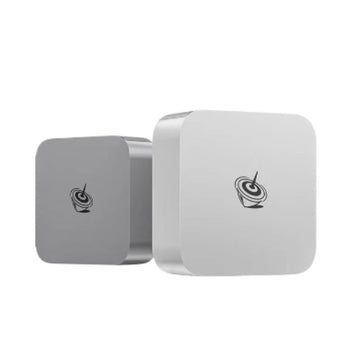

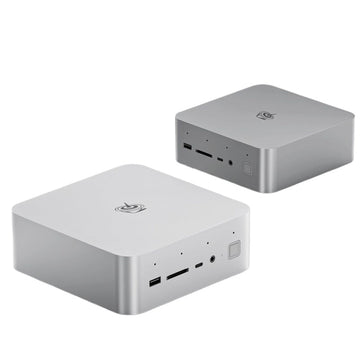
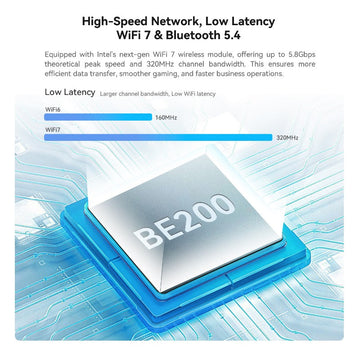
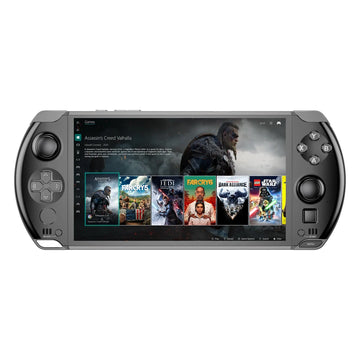

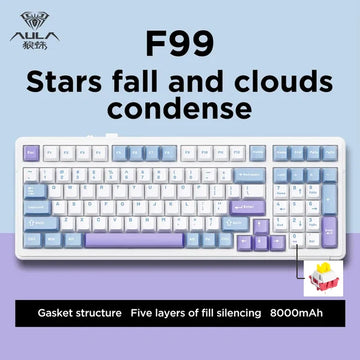
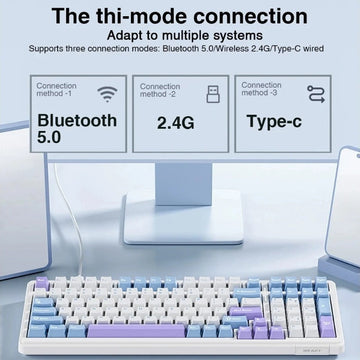





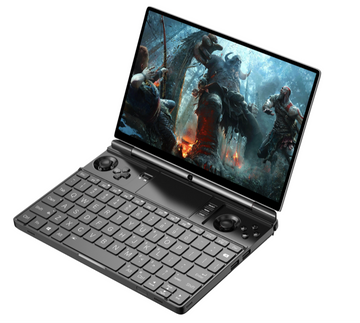

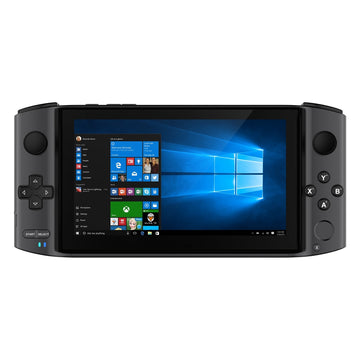
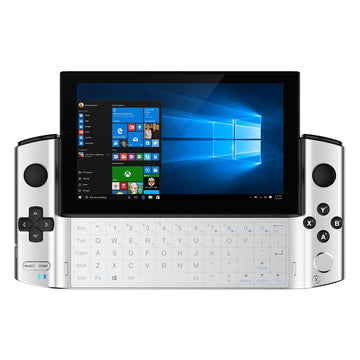
![[US Warehouse]Flydigi Vader 5 Pro Dragon Ball Limited Edition Game Controller](http://minixpc.com/cdn/shop/files/2bf62a4b1011cdf0b5088de9d5ad663d_360x.jpg?v=1763001514)
![[US Warehouse]Flydigi Vader 5 Pro Dragon Ball Limited Edition Game Controller](http://minixpc.com/cdn/shop/files/0944bf12c40c5bcaf5bc45c2a2f0b9e0_360x.jpg?v=1763001514)


